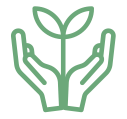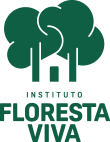Native Seedling Nursery
Localizado na Rodovia Serra Grande/Uruçuca, o Viveiro do Instituto Floresta Viva foi inaugurado em 2009, fruto de uma parceria com a Fundação SOS Mata Atlântica.
Com a infraestrutura criada, o viveiro estabeleceu uma capacidade de produção de até 100 mil mudas de espécies florestais por ano. A experiência com as árvores nativas deste bioma gerou, ao longo desses 15 anos de existência do viveiro, a identificação e multiplicação de mais de 140 espécies, muitas delas endêmicas e ameaçadas de extinção.
As sementes utilizadas no viveiro são coletadas, em sua grande maioria, pela equipe técnica do IFV. Após serem beneficiadas e germinadas, as sementes levam de quatro a seis meses para se transformarem em mudas prontas para o plantio.
The seeds used in the Nursery are purchased from small farmers in the APA Costa de Itacaré-Serra Grande. There are more than 40 families associated with a network of parent trees (seed suppliers) identified by Floresta Viva, who experience in practice the benefits of keeping forests standing. The technical team at IFV not only collects seeds, but also provides technical assistance to these farmers so that they can produce their own seedlings with quality.
The Instituto Floresta Viva nursery was inaugurated in 2009, the result of a partnership with Fundação SOS Mata Atlântica. The nursery's initial focus was to meet a demand for the production of seedlings for a restoration project in the Serra do Conduru State Park. With the infrastructure created, the Nursery established a production capacity of up to 100,000 seedlings of forest species per year.
The seeds used in the nursery are mostly collected by the IFV technical team, which maintains a close relationship with producers and farm owners in the municipalities of Uruçuca, Itacaré, Una and Ilhéus. After being benefited and germinated, the seeds take around four to six months to become seedlings ready for planting.
The Nursery is usually open to the general public, interested in learning about the various stages of reforestation: the choice of seeds, the development of seedlings, and the maintenance necessary for the full growth of plants. Visitors also have the opportunity to walk through an educational ecotrail and contemplate various species that inhabit the Atlantic Forest, including specimens of Conduru, Pau-brasil and Pau d’arco.




